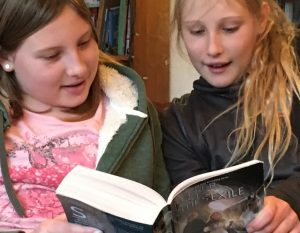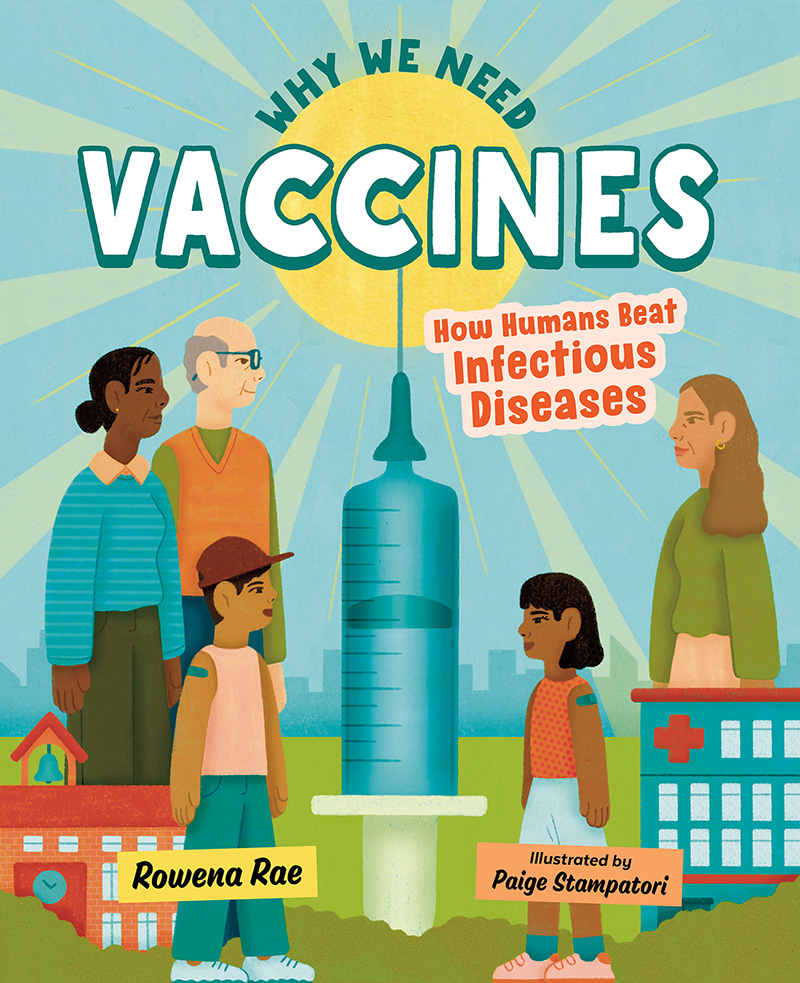On a sunny, breezy evening in Montreal, my two daughters, my nephew, and I walked through the front door of an unassuming-looking restaurant named Onoir.
I read to you, you read to me

It’s late afternoon. I’m in the kitchen making supper, and my daughters are in the living room doing homework. Suddenly, giggles break the silence. Then, the two girls barrel upstairs to their bedrooms. More giggles and the odd whoop funnel down the stairwell. A few minutes later, the girls burst into the kitchen. The younger one dumps a pile of props on a chair, and the older one grabs my recipe-book holder. She arranges an open book on it and clears her throat.
“Ahem!” she announces. “We are going to read to you.”
The girls proceed to read and act out a poem from a book by Mary Ann Hoberman called I Read to You, You Read to Me. It was one of our favourites a handful of years ago when the girls were learning to read. Now—at ages 11 and 13—they are both proficient and voracious readers of multi-inch-thick chapter books, but their joy of reading aloud and being read to hasn’t abated.
I can’t remember a time when reading aloud wasn’t an important part of my life. As children, my sister and I spent many a winter’s evening snuggled on either side of my father on the living room couch, listening as he read Sherlock Holmes stories. He always started strong, giving amusing voices to the various characters and adding sound effects—horse whinnies, fist thumps, bad-guy chortles. Later, though, his head would begin to nod and his speech slur. Eventually, his head would drop onto the back of the couch and loud snores would erupt. My sister and I took turns poking him in the side. “Daddy! Wake up! Keep reading.” He would come to, squeeze his eyes, track his finger down the page to find his place, and read another paragraph, maybe two. Then, nodding head, slurred speech, snores.
I continued the tradition of reading aloud from the moment my first daughter was born. Nearly every evening, even now, 13 years later, after the supper dishes are cleared, we gather in the living room to read. Over the years, I’ve read aloud board books, picture books, early readers, and far too many fairy chapter books. Finally we made it to series: the Chronicles of Narnia (6 months of near-nightly reading), the Harry Potter books (14 months), and the Lord of the Rings (1 month in). I’m no longer the only reader, either: sometimes I emulate my father—although, I hope, without the snoring—and one of my daughters removes the book from my droopy grasp and finishes the chapter.
That both of my daughters feel confident to pick up where I’ve trailed off and read aloud from these books gives me both pride and joy. Not only are they confident readers, but they read with fluency and expression. I credit this to all the reading aloud they’ve been exposed to over the years—and continue to experience. We tend to think of story time being for tots, preschoolers, and young grade schoolers, but there’s no reason why story time can’t be for older kids, teens, and adults. And there are many reasons why it should be.
Decades ago, teacher and literacy expert Janet Allen began reading aloud to her high school students—most of whom exhibited a decided lack of enthusiasm for reading. Over time, class attendance improved; students didn’t want to miss hearing the next chapter. They began reading more on their own, their vocabularies increased, their writing got better. And all Allen had done was give her students the shared experience of being read to.
Teachers of adult English language learners use read-alouds with success, too. Hearing a teacher read aloud gives adult learners access to material they wouldn’t yet be able to read on their own. The teacher-reader models pronunciation, introduces examples of good writing, and most especially advertises a love of reading.
Even adults who aren’t learning the language find pleasure in being in a group listening to a story being read aloud, like those who joined a daily reading session at a UK museum a few years ago. For one listener, it brought back happy childhood memories; for another, it heightened the intensity of emotions to hear another voice read a charged passage; and for still another—a man with dyslexia—it offered the chance to enjoy a story free from struggling to read it himself.
This new year, as we all hope fervently for a better year ahead than the year past, I invite you to add the joy of reading aloud with other people to your days. Despite the good news of vaccines, we still have months ahead of lying low to keep ourselves, loved ones, and communities safe. So grab a piece of writing—a poem, picture book, article, essay, short story, novel, treatise on life—and read it aloud with your child, teen, partner, parent, whomever. Take turns reading, by sentence, paragraph, page, or chapter. Spring up and deliver a poem or play in reader’s-theatre style. Read over Zoom to your grandchild or grandparent, to your nephew or niece. Find a read-aloud Meetup group (initially online, of course). Practise your read-aloud skills—perhaps you will be inspired to volunteer to read in a nursing home or at a school when the vaccines release COVID’s grip.
Most of all, just read aloud and enjoy the feeling. And if your home is anything like mine, you’ll hear from one of your listeners the words, “Just one more chapter. Please!”
Happy new year!



